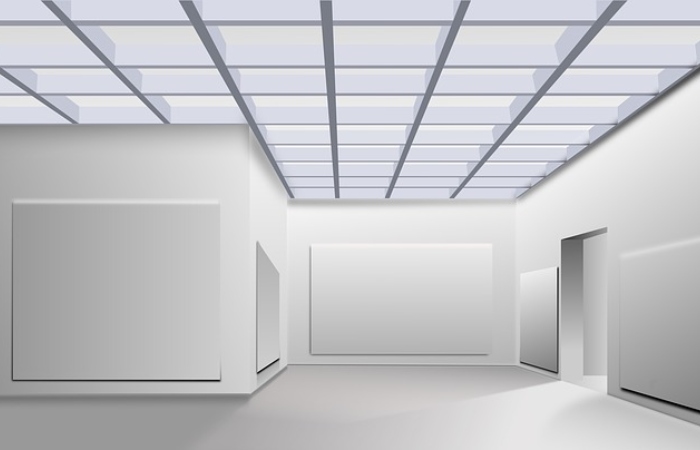Walking into the museum gallery where this piece currently hangs at the Museum of Modern Art — aka MoMA — in New York City, I was immediately struck by “Composition 9,” a piece from Spanish artist Manolo Millares, who passed away in 1972, the wall says.
I personally favor collage as a method of making, since within the process, the possibilities rapidly expand for exploring the relationships between physical objects alongside what those connections suggest about surrounding relational ties. While not necessarily a collage in the most familiar sense I’m imagining, “Composition 9,” which is dated to 1957, assembles burlap and string with pigmentation identified as from whiting and lampblack — evoking the process, however you would like to define it.
The burlap is spread across an evident frame as though more traditional canvas, with large gaps in the material that Millares filled with string latticework. The texture of the burlap essentially expands the surface upon which — and depth within which — the pigments can operate, and from one side to the other, the piece’s striking black runs across the center, though gaps include a large area of that string that’s been whitened. The wall behind the piece is visible in these areas, because the latticework leaves gaps.
The piece evokes intensive, physical activity. There are no specific points across it demanding your attention to a level well beyond the surrounding points, though the gaps in the burlap do grab some focus. You instead are left with the sense of the physicality of these colors, which you don’t really register — at least at the outset — as a field of color perhaps evocative of the most well-known pieces by Mark Rothko, since those gaps ensure your attention is at least partially broken up.
So while Millares’ application of black is extensive, the effect ends up more like a primal, psychological landscape perhaps fading into the background of the elusive central area of attention that’s never quite in view. (The piece is rectangular and oriented horizontally, amplifying the sense you’re observing something with the experiential qualities of a landscape.)
I find the gash across prospective attention on the black ensured by the literal gaps in the burlap to be definitive, making the rhythm of the whole piece fall in upon itself like droning noise rock that leans much more into demand and dread than resolution. The portions of black pigment on the left and right sides of the surface lay atop each other like the black lays atop the white and all the color interacts with the coarse surfaces beneath. And back at the foundation, within each color — and this is particularly noticeable in the black — the consistent saturation means every bit of color essentially rests directly “atop” the closest areas of color within the same section.
Thus, while there’s a lack of clear resolution, this psychological landscape seems still.
An image of the artwork has been posted online via the museum, and it’s linked here. (Outreach about press’ reproduction opportunities for images will be forthcoming.) If you’re in New York, it remains on view on the museum’s fourth floor.
Image: Gerd Altmann from Pixabay
You may also like
-
Diana Kurz at Lincoln Glenn in New York: A Review of a Shining Art Exhibition
-
Dustin Hodges at 15 Orient in New York City: An Ensnaring Exhibition at an Exciting Gallery
-
Maren Hassinger at Susan Inglett Gallery in New York: Reviewing an Uplifting Art Exhibition
-
Enzo Shalom at Bortolami in New York City: Reviewing an Entrancing Exhibition of Paintings
-
“Ben Werther: Townworld” at Amanita in New York City: Reviewing a Richly Memorable Art Exhibition
